Venice (Marghera, Italy)
Cruise Port schedule, live map, terminals, news
Region
Mediterranean - Black Sea
Local Time
2024-11-26 03:02
 43°F
43°F 6.2°C

 Light breeze
Light breeze2.1 m/s
 51 °F / 11 °C
51 °F / 11 °C 42 °F / 6 °C
Port Venice cruise ship schedule shows timetable calendars of all arrival and departure dates by month. The port's schedule lists all ships (in links) with cruises going to or leaving from Venice, Marghera, Italy. To see the full itineraries (ports of call dates and arrival / departure times) and their lowest rates – just follow the corresponding ship-link.
| Day | Ship | Arrival | Departure |
|---|---|---|---|
| 31 May, 2026 Sunday | |||
| 1 June, 2026 Monday | 07:00 | 22:00 | |
| 2 June, 2026 Tuesday | 08:00 | 18:00 | |
| 4 June, 2026 Thursday | 07:00 | 19:00 | |
| 5 June, 2026 Friday | |||
| 5 June, 2026 Friday | 21:00 | 07 Jun, 10:00 | |
| 7 June, 2026 Sunday | |||
| 7 June, 2026 Sunday | 22:00 | 08 Jun, 09:00 | |
| 8 June, 2026 Monday | |||
| 8 June, 2026 Monday | 01 Jan, 02:00 | ||
| 8 June, 2026 Monday | 18:00 | 09 Jun, 10:00 | |
| 9 June, 2026 Tuesday | 01 Jan, 02:00 | ||
| 9 June, 2026 Tuesday | 22:00 | 11 Jun, 05:00 | |
| 12 June, 2026 Friday | |||
| 12 June, 2026 Friday | |||
| 13 June, 2026 Saturday | 01 Jan, 02:00 | ||
| 13 June, 2026 Saturday | |||
| 13 June, 2026 Saturday | 07:00 | 19:00 | |
| 14 June, 2026 Sunday | |||
| 15 June, 2026 Monday | |||
| 16 June, 2026 Tuesday | 01 Jan, 02:00 | ||
| 17 June, 2026 Wednesday | 21:00 | 19 Jun, 10:00 | |
| 19 June, 2026 Friday | |||
| 19 June, 2026 Friday | |||
| 19 June, 2026 Friday | 22:00 | 20 Jun, 09:00 | |
| 20 June, 2026 Saturday | |||
| 20 June, 2026 Saturday | 18:00 | 22 Jun, 08:00 | |
| 21 June, 2026 Sunday | |||
| 23 June, 2026 Tuesday | 22:00 | 25 Jun, 09:00 | |
| 25 June, 2026 Thursday | 08:00 | 17:00 | |
| 25 June, 2026 Thursday | 18:00 | 26 Jun, 10:00 | |
| 26 June, 2026 Friday | |||
| 26 June, 2026 Friday | 22:00 | 28 Jun, 05:00 | |
| 28 June, 2026 Sunday | |||
| 29 June, 2026 Monday | 06:00 | 18:00 |
Venice (Venezia) is a major seaport in the Adriatic (northeastern Italy) and one of Italy's most visited ferry and cruise ports serving turnaround operations (roundtrip Mediterranean itineraries) and also connecting to North Africa and Middle East. The city is the capital of Veneto (one of Italy's 20 regions) and has population over 260,000.
Venezia was established in the 7th century as a cluster of total 124 island settlements. Current-day Venice City is spread across 118 isles (Venetian Islands) separated by canals and interlinked by 400+ bridges. All these isles are in the Venetian Lagoon - a bay between the mouths of two rivers (Po and Piave). The entire Venetian Lagoon and part of Venezia are designated as UNESCO Site.
Venice City is currently served by two cruise ports - Porto Venice (locode ITVCE, for smaller ships and riverboats) and Porto Marghera (for large liners).
- Marghera was developed to serve as the city's commercial/cargo and industrial port (outside downtown) and is one of Europe's largest coastal industrial zones.
- On April 9, 2022, was inaugurated Marghera's provisional dock/temporary berthing facility (at Liguria Quay/EUR 1,9 million project) dedicated to cruise liners.
The Port is managed by AdSPMAS/Autorita di Sistema Portuale del Mare Adriatico Settentrionale/Porti di Venezia e Chioggia (Port Authority of Venice and Chioggia).
(IMPORTANT) Port Venice cruise ship ban
On July 13, 2021, Italy permanently banned large cruise ships from entering the Venice Lagoon (via Giudecca Canal) and docking at downtown terminals. The ban (effective since August 1, 2021) prohibits all vessels with GT 25,000+ tonnes.
- As an alternative cruise port is being developed Port Marghera, with expected completion in 2021-Q4. By this ban, only small-sized vessels (passenger ferries, cargo ships, riverboats) can navigate the Giudecca and enter Venice's downtown.
- In July 2021, Costa and MSC replaced Venice (as homeport) with other Italian ports. Passengers were actually collected at Venice, then via buses transported to a different Italian port (Trieste or Monfalcone).
In mid-June 2020, RCI-Royal Caribbean replaced Venice (as homeport) with Ravenna. The change affected the Rhapsody of the Seas' Mediterranean schedule 2021 (May 1 through October 23). Ravenna is approx 144 km (90 mi road distance) to the south from Venice, or ~2,5 hours drive (via SS309 / Ravenna-Chioggia road).
- The itinerary change was explained with "increased concerns regarding the future of cruising in Venice Italy due to port congestion and the ability to control port traffic".
- Customers with already purchased through RCI airfare received complimentary shuttle bus transportation (pre- and after-cruise). Optionally was offered purchasing bus transfers from both the Ravenna cruise terminal and/or the Venice Marco Polo Airport.
In September 2023, Fulvio Lino Di Blasio (Port Authority's President) announced that cruise ships will be allowed to use Stazione Marittima di Venezia starting in 2027-Q2. The new plan grants entry to relatively smaller vessels (with max volume 60,000 GT-tons and max length 250 m/820 ft). Like the big liners, they will be also banned from the San Marco basin (Guidecca Channel route) and instead will access Stazione Marittima using the Vittorio Emanuele III Channel route.
The larger cruise ships will continue to visit Venice via Port Marghera.
Fincantieri Marghera shipyard
Fincantieri (one of the world's largest shipbuilding companies) owns the merchant shipbuilding yards Monfalcone (near Trieste), Marghera (Venice), Sestri Ponente (Genoa), Ancona, Castellammare di Stabia (near Naples) and Palermo Sicily. The company also owns the naval shipyards Riva Trigoso (Genoa) and Muggiano (La Spezia).
Next are listed all cruise ships constructed at the Marghera yard, by the year built.
- (1991) Pacific Dawn, Costa Classica
- (1993) MS Statendam, MS Maasdam, Costa Romantica
- (1994) MS Ryndam
- (1995) Sun Princess, Carnival Destiny-Sunshine
- (1996) MS Veendam, Dawn Princess
- (1997) MS Rotterdam
- (1998) Sea Princess, Disney Magic
- (1999) MS Volendam, Carnival Triumph-Sunrise, Disney Wonder
- (2000) MS Zaandam, MS Amsterdam
- (2000) P&O Oceana, Carnival Victory-Radiance
- (2001) MS Zuiderdam, plus two cruiseferies (Pride of Hull, Pride of Rotterdam)
- (2002) MS Oosterdam, Carnival Conquest
- (2003) Carnival Glory, Costa Fortuna, Costa Magica
- (2004) MS Westerdam, Carnival Valor, P&O Arcadia
- (2005) Costa Concordia, Carnival Liberty
- (2006) MS Noordam, Costa Serena, Carnival Splendor
- (2007) MS Eurodam, Queen Victoria, Carnival Freedom, P&O Ventura
- (2008) Ruby Princess, Costa Luminosa, Costa Pacifica
- (2009) MS Nieuw Amsterdam, Carnival Dream, Costa Deliziosa, P&O Azura
- (2010) Queen Elizabeth, Costa Favolosa, Carnival Magic
- (2011) Costa Fascinosa, Carnival Breeze
- (2013) Royal Princess
- (2014) Regal Princess, Costa Diadema
- (2015) P&O Britannia, Ponant Le Lyrial, Viking Star
- (2016) MS Koningsdam, Carnival Vista, Seabourn Encore, Seven Seas Explorer, Viking Sea
- (2017) Majestic Princess, MSC Seaside, Viking Sky, Viking Sun, Silver Muse
- (2018) MS Nieuw Statendam, Carnival Horizon, MSC Seaview, Viking Orion, Seabourn Ovation
- (2019) Sky Princess, Costa Venezia, Carnival Panorama, Viking Jupiter
- (2020) Enchanted Princess, Costa Firenze, Scarlet Lady, Seven Seas Splendor
- (2021) MS Rotterdam, MSC Seashore, Valiant Lady, Viking Venus
- (2022) Discovery Princess, MSC Seascape, Resilient Lady, Norwegian Prima, Cunard-tbn, Viking Mars, Viking Neptune
- (2023) Norwegian Viva, MSC Explora 1, Virgin-tbn, Princess-tbn
- (2024) NCL-tbn, MSC Explora 2
- (2025) NCL-tbn, MSC Explora 3, Princess-tbn
- (2026) NCL-tbn, MSC Explora 4
- (2027) NCL-tbn
The list of brands/shipowners includes CCL-Carnival, MSC, Costa, Princess, HAL-Holland America, Virgin, P&O (UK and Australia), Disney, Viking OCEAN, Ponant.
Port Venice
Porto di Venezia is a seaport in northeastern Italy, ranked Italy's 8th largest commercial port and also among the largest and most important cruise ports in southern Europe (Mediterranean Sea). As shipping volumes, in 2006 the port handled around 30,937 million cargo tons and over 1,453 million passengers (ferry and cruise).
Port Venice is currently the 2nd largest Mediterranean cruise port (after Barcelona) by passenger volumes. However, due to environmentalist campaigns (since Concordia's sinking in 2012) to stop large-sized liners in Venice (vessels over 10 decks high), Port Venice started progressively to lose ship calls. In 2017, their number dropped over 10% - from 529 (in 2016) to 470. Cruiseship passenger numbers decreased by 11,4% (to around 1,4 million), which resulted in an income fall. Since the mid-1990s, cruising tourism is an important income source for the city and its citizens.
Environmentalists demand larger cruise vessels to stop navigating along Guidecca Canal to reach the seaport, as the route takes them within just 300 m (1000) ft of Piazza San Marco (St Mark’s Square). Besides the visual impact, other concerns are the damage caused by marine diesel engine pollution and the vessels' water displacement. New port regulations will require cruise ships to reduce emissions by switching to LSDO (lower-sulfur diesel fuel) before entering Venice Lagoon.
The controversy over whether cruise ships should be allowed into Venice was heightened right after Costa Concordia ship's capsizing near Giglio Island. Following the accident, the government issued a law banning cruise liners with gross tonnage over 96,000 GT from navigating the Guidecca Canal. The number of smaller cruise vessels (over 40,000 GT) along the channel was limited to 5 per day. In 2014, this law came into effect, just to be thrown out 2 months later by the Venice Court of Appeal.
In mid-June, 2017, over 18,000 Venetians voted in an unofficial referendum about banning large cruise vessels that navigate near St Mark Square. Activists set up a total of 60 polling booths, where 17,874 citizens voted to eject the ships which produce waves shaking the city's wooden foundations.
- In September 2017, three of the world's largest cruise companies (Carnival, Royal Caribbean, MSC) run shipping simulations on large liners navigating the Vittorio Emanuele III Channel route (Stazione Marittima) as a proposed alternative to the banned Guidecca Channel route.
- Since November 2017, Venice seaport access (through Giudecca Canal) is denied to cruise liners with GT tonnage over 100,000 tons. Instead, the vessels are rerouted to Port Marghera, from where passengers are ferried to downtown.
Since September 2019, Venice City charges day-trippers a tax of up to EUR 10 / USD 11 pp, which brings tens of millions of EUR annually. Of the ~24 million tourists in 2019, ~15 million were day-trippers. The new tourist tax (entrance fee) was approved by the Italian Government and contained in the country's 2019 budget. The new charge is included in the cost of hotels, trains, buses and cruise ship tickets. The tax ranges between EUR 2.50 to EUR 10 per person, depending on arrival time (low or high season).
Ferries
Regularly scheduled cruiseferries link Venice City with Ancona and also with Slovenia (Piran), Croatia (Pula, Rovinj, Umag, Porec) and Greece (Kerkyra-Corfu, Igoumenitsa, Patras).
- Venice-Piran route is served by Venezia Lines with 1 weekly crossing (travel time 2,5 hours).
- Venice-Pula route is served by Venezia Lines (4 weekly crossings) and Atlas Kompas (3 weekly crossings), travel time is 3 hours.
- Venice-Porec route is served by Venezia Lines (7 weekly crossings) and Atlas Kompas (5 weekly crossings), travel time is 3-3,5 hours.
- Venice-Rovinj route is served by Venezia Lines (7 weekly crossings) and Atlas Kompas (3 weekly crossings), travel time is 2,5-3,5 hours.
- Venice-Umag route is served by Venezia Lines (1 weekly crossing) and Atlas Kompas (1 weekly crossing), travel time is 2,5-3,5 hours.
- Venice-Corfu route is served by Minoan Lines (2 weekly crossings, time 26,5 hours) and ANEK Superfast (1 weekly crossing, time 25 hours).
- Venice-Igoumenitsa route is served by Minoan Lines (2 weekly crossings, time 28,5 hours) and ANEK Superfast (2 weekly crossings, time 25,5 hours).
- Venice-Patras route is served by Minoan Lines (3 weekly crossings, time 30,5 hours) and ANEK Superfast (2 weekly crossings, time 32 hours).
- Venice- Ancona route is served by Minoan Lines with 2 weekly crossings (travel time 6,5 hours).
MOSE - Venice flood barrier project
MOSE project is designed to protect Venice and Venetian Lagoon from flooding caused by high tides (up to 3 m / 10 ft). The integrated system consists of rows of large mobile gates at 3 inlets (Lido, Malamocco and Chioggia) through which Adriatic Sea water enters and leaves the Venetian Lagoon.
These gates are able to temporarily isolate the lagoon from the sea during high tides as they open and close separately thus controlling the water flow.
MOSE system's control center is in Venice's Arsenal, where 9 people constantly monitor the lagoon's conditions. The monitoring staff's training started in 2011 by simulating real-time flood defense operations. During that period was also collected data about water levels, waves, water pressure, and fresh river flood.
Flooding due to high tides mires Venice during winter months. During high tide forecasts, sirens all over the city sound a warning, and real-time information is provided (online and via mobile phones). Other measures are setting up temporary elevated platforms in city parts with heavy pedestrian traffic. High tides usually last 2 1/2 hours. The flood of November 4, 1966, saw water levels reaching up to 194 cm (6 ft). This was the end of the agriculture in the lagoon and also resulted in the death of the majority of its plants. Previously, the lagoon was a winemaking region.
The Mose barrier concept was first proposed in 1988. The consortium Venezia Nuova was contracted by Italy's Ministry of Infrastructure and Transport. Construction works (simultaneously at all 3 lagoon inlets) started in 2003. The project also included other anti-flood measures - coastal reinforcement, raising quaysides, and lagoon improvements. The project was 85% completed in 2014. In 2016, the gates arrived and were inserted into their concrete foundations.
The project's total cost was EUR 5,4 billion (GBP 3,9 billion), with its completion scheduled for 2020.
Construction works on the MOSE system were slowed due to investigations into corruption, with allegations of bribery and illegal political party financing. The investigation resulted in 35 arrests (in June 2014). Among the arrested was Consorzio Venezia Nuova's former president, who was accused of diverting funds to Venice's mayor for financing his campaign for office in 2010.
Construction works included pre-building concrete foundations (23,000 tons each) and then lowering them into the lagoon. Gates have spares (for each inlet), which allow being removed every 5 years (for maintenance) without interrupting the barrier's service. All hinges on the gates are equipped with a waterproof camera that permits removal operations to be accurately monitored and controlled.
The commercial harbor is impacted each time the gates are lifted. The amount of electricity used for the operations is also considerable.
According to CLIA (data 2019), in Italy, the ship cruise industry generates an annual turnover of ~EUR 16,2 billion (USD 19,1B / GBP 14B) and supports 120,000+ jobs (direct and indirect).
Venice cruise terminal
Port Venice is the leader not only in one traffic segment. It is the largest Mediterranean cruise port (in terms of annual passenger shipping numbers) and also main cargo port. Roundtrip cruise itineraries from Venice (homeport) go mainly to ports in Adriatic Sea (Croatia, Montenegro, Albania) and Aegean Sea (Greece and Turkey). Port Venice has 10 multifunctional (cargo) terminals and 6 dedicated cruise piers/passenger terminals.
Venice Cruise Port Terminal (VCT or Terminal Venezia Passeggeri) is Europe's 3rd busiest cruise port and world's 13th largest. Each year, Port Venice handles thousand cruise ship calls and over 1 million passengers. The seaport is located at the end of Venice (the road to the continental Italy, at the 4th km).
The seaport is in the Venetian Lagoon and the Porto di Lido channel links it to Adriatic Sea (Mediterranean). Over 20 cruise companies are hosted by Venice Cruise Terminal. Major companies, like NCL Norwegian Cruise Lines, Carnival, Royal Caribbean and MSC, homeport large-sized liners here.
The cruise port has 3 main quays, the biggest being Marittima. It has 3 passenger terminals with capacities to handle world's largest liners. The cruise port comprises TM Quay, Piave Quay (berth 117), Tagliamento Quay (berths 107, 109, 110, 112) and Isonzo Quay (berths 18 and 20). Two terminals serve smaller ships - San Basilio (berths 29 to 31) and Santa Marta (berths 24 to 28). All these docks are in the Giudecca Canal.
On November 8, 2017, was officially announced the decision to not allow Venice seaport access (through Giudecca Canal) to cruise liners of GT tonnage over 100,000 tons. Instead, the vessels are rerouted to Port Marghera, from where passengers are ferried to Venice.
Venice tours, shore excursions, hotels
City Tours and Shore Excursions
Venice is known to be the “Queen of the Adriatic”. It is one of the most romantic world cities. Venice can enchant anyone with its breathtaking palazzos, canals and beautiful bridges. This city is so spectacular, that you will need at least three days to enjoy some of its wonders. Spend a day in a gondola at the narrow channels and be amazed by Venice. Go to Murano, the Venetian glassmaking center, or visit some of the famous places near the St Marks Square:
- Basilica: the place where you can see Pala d’Oro. This famous altarpiece dates since 976. It is made of solid gold by the Byzantine goldsmiths and it has precious gems encrustations.
- Doge’s Palace: situated right to the Basilica. You can see the Council Hall, plaques of the Doges (all 76, except Doge 55) and the world-famous Bridge of Sighs (the last walking place for the criminals before their transfer from the palace into the jail).
- Campanile: dating since 912. The Campanile is the third building you have to see. There is astonishing city view from the top of it. This is not the exact original of the building, but a rebuilding with the original materials after its collapse in 1902.
From Venice City are offered tours to Bologna - located approx 130 km (80 ml) to the southwest. Train travel time is 1,5 hours.
- Cruise Industry
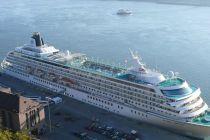
Crystal Cruises introduces Casino de Monte-Carlo at sea on Crystal Symphony
Crystal Cruises has unveiled the Casino de Monte-Carlo at sea, marking its debut aboard Crystal Symphony during a ribbon-cutting ceremony in Venice...
November 16, 2024 - Cruise Industry
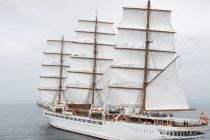
Sea Cloud Spirit ship scheduled for roundtrip cruises from Venice in 2025 summer
Sea Cloud Cruises/fleet will introduce on its flagship Sea Cloud Spirit a new series of 9-night roundtrips from Venice (Italy) in summer 2025. For...
October 27, 2024 - Cruise Industry

Ambassador Cruise Line UK unveils 2026-2027 itineraries with expanded departures
Ambassador Cruise Line UK has officially launched its 2026-2027 season, offering a range of affordable, no-fly itineraries from March 22nd, 2026, to...
October 23, 2024 - Cruise Industry

Construction started of Regent's ship Seven Seas Prestige at Fincantieri-Marghera
RSSC-Regent Seven Seas Cruises has officially commenced construction of its newest ship - Seven Seas Prestige, scheduled for delivery in 2026. The...
October 23, 2024 - Cruise Industry
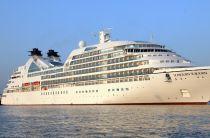
Seabourn sets sail for 2026: Solar Eclipses, Northern Fjords, and Asian Escapes
The ultra-luxury cruise company Seabourn unveiled its 2026 itineraries fleetwide. These voyages will cover a wide range of destinations, with...
October 13, 2024 - Accidents
Marseille cruise port blocked by protestors over environmental impact of ships
Environmental activists temporarily blocked the cruise ship port in Marseille (France) on Saturday, September 22nd, in protest against the...
September 22, 2024 - Cruise Industry

Uniworld expands 2025 offerings with new ship SS Elisabeth and 6 European itineraries
Uniworld Boutique River Cruises has unveiled its 2025 lineup, which includes the introduction of its newest boat - SS Elisabeth/fka Riverside Mahler...
September 21, 2024 - Cruise Industry

NCL-Norwegian adds 3 new ports to 2026 Spring & Summer European cruises
NCL-Norwegian Cruise Line has expanded its European offerings for the 2026 spring and summer seasons, introducing 3 new ports and itineraries...
August 24, 2024 - Cruise Industry
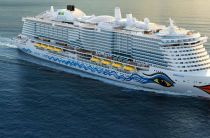
Fincantieri in talks for 6 new cruise ships for Carnival Corporation
Following the announcement of 3 new mega ships for CCL/Carnival Cruise Line, it appears that Carnival Corporation (world's largest cruise shipowner...
August 8, 2024 - Cruise Industry
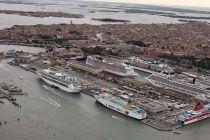
Venice's day tourist fee generates millions, faces increase in 2025
This year, Venice (Italy) implemented a 5-euro entrance fee for day tourists on particularly busy days, aiming to generate additional income from...
July 18, 2024 - show more news

